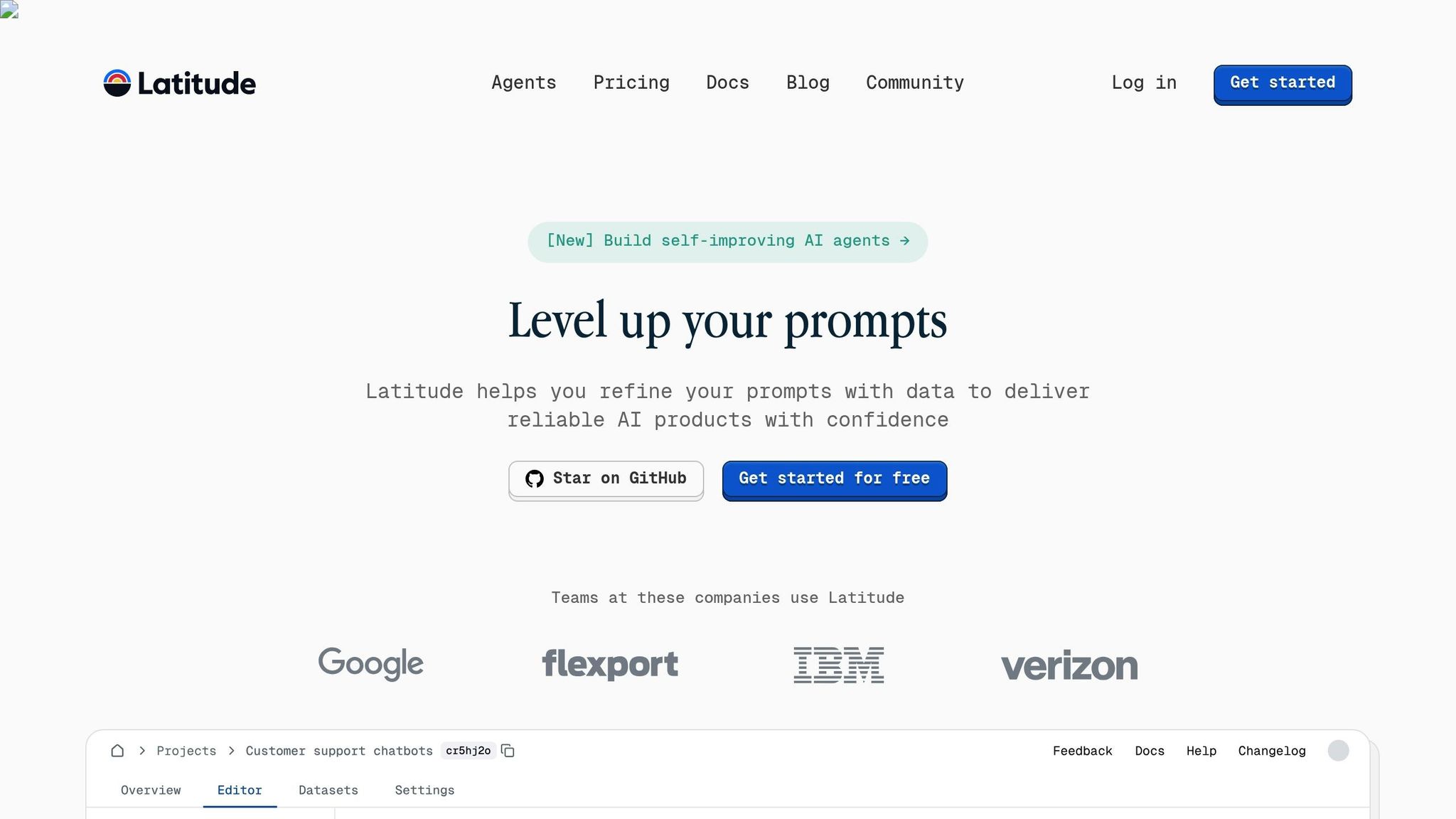Fine-Tuning vs Prompt Engineering: Key Differences
Explore the key differences between fine-tuning and prompt engineering for optimizing Large Language Models, including when to use each approach.

Fine-tuning and prompt engineering are two ways to optimize Large Language Models (LLMs). Here’s the quick breakdown:
- Fine-tuning: Retrains the model with specific datasets for precision. Ideal for tasks needing accuracy, domain knowledge, or consistent outputs. It requires more time, resources, and expertise.
- Prompt engineering: Focuses on crafting instructions to guide the model. It’s faster, flexible, and doesn’t require retraining but relies on well-designed prompts for consistency.
Quick Comparison:
| Aspect | Fine-Tuning | Prompt Engineering |
|---|---|---|
| Setup Time | Days to weeks | Hours to a few days |
| Cost | High upfront, lower ongoing | Low upfront, higher per use |
| Flexibility | Less adaptable after training | Easily adjustable |
| Output Consistency | High | Depends on prompt quality |
| Technical Skill | Advanced machine learning | Basic programming knowledge |
Key takeaway: Use fine-tuning for specialized, high-accuracy tasks. Choose prompt engineering for quick, adaptable solutions. Combining both often delivers the best results.
Understanding Fine-Tuning
What Fine-Tuning Means
Fine-tuning is the process of tailoring a pre-trained Large Language Model (LLM) to handle specific tasks with improved precision. By using domain-specific datasets, the model updates its internal parameters to better understand the language and context of a particular field. For instance, a medical transcription service might fine-tune an LLM with thousands of doctor-patient conversations to enhance its grasp of medical terms and healthcare scenarios. This process is systematic and focused.
Fine-Tuning Process Steps
Fine-tuning typically involves three main phases:
-
Data Preparation
The data used for fine-tuning should meet these criteria:- Relevant to the task at hand
- Properly formatted, free of errors, and accurately labeled
- Reflective of real-world use cases
-
Model Selection and Configuration
Engineers adjust the model's settings and parameters, such as:- Learning rate
- Batch size
- Number of training epochs
- Any modifications to the model's structure
-
Training and Validation
This phase includes:- Running multiple training iterations
- Monitoring performance metrics
- Testing results on validation datasets
- Making adjustments to avoid overfitting
When to Use Fine-Tuning
Fine-tuning is especially useful in situations requiring precision and specialized knowledge. Below are scenarios where it delivers the best results:
| Scenario | Requirements | Expected Outcome |
|---|---|---|
| Industry-Specific Applications | Knowledge of domain-specific language | Accurate use of industry terminology |
| Consistent Brand Voice | Style guides and communication samples | Outputs aligned with brand tone |
| Technical Documentation | Access to specifications and manuals | Clear technical explanations |
| Regulatory Compliance | Legal and compliance-related materials | Responses that follow specific regulations |
Fine-tuning is the go-to approach when your application demands:
- Consistent and reliable outputs
- Handling of specialized knowledge or terminology
- Maintaining specific formats or structures
- High levels of accuracy essential for business needs
Understanding Prompt Engineering
What Prompt Engineering Means
Prompt engineering involves creating detailed instructions to guide Large Language Models (LLMs) in generating specific outputs - without altering the model itself. Unlike fine-tuning, which changes the model's internal settings, this method focuses on crafting well-structured inputs to achieve desired results.
Latitude's platform helps teams design prompts that effectively tap into LLM capabilities. This method keeps the base model intact while delivering tailored outputs through strategic input design.
Steps in the Prompt Engineering Process
The process of prompt engineering follows a structured approach to ensure the best results:
- Prompt Design: Create prompts by defining the context, specifying tasks, outlining the desired format, and setting clear boundaries.
- Testing and Iteration: Evaluate how well the prompt works by:
- Running tests with different inputs
- Checking for consistent and accurate outputs
- Identifying edge cases
- Documenting patterns that yield effective results
- Optimization and Refinement: Improve the prompt by:
- Fine-tuning the language for clarity
- Adding or removing contextual details
- Adjusting instructions to be more precise
- Incorporating proven patterns from earlier tests
This workflow helps refine prompts to meet specific goals effectively.
When to Use Prompt Engineering
| Scenario | Benefits | Example Applications |
|---|---|---|
| Rapid Prototyping | Fast iterations, no training | Content creation, chatbots |
| Dynamic Tasks | Easy to adjust instructions | Customer support, data analysis |
| General-Purpose Needs | Broad use, simple maintenance | Text summarization, translation |
| Limited Resources | Minimal computational demands | Small-scale projects |
Prompt engineering works particularly well in scenarios where:
- Quick deployment and iteration are priorities
- Instructions need to be flexible and easy to adjust
- Frequent updates are part of the process
- Budget or computational power is a concern
- The task doesn’t require deep domain-specific knowledge
Fine-Tuning vs. Prompt Engineering
Pros and Cons
Understanding the strengths and limitations of fine-tuning and prompt engineering can help you choose the best approach for optimizing large language models (LLMs).
Fine-Tuning: Pros
- Delivers higher accuracy for specific tasks by tailoring the model.
- Ensures consistent performance after training is completed.
- Uses fewer tokens, which can speed up responses.
- Handles domain-specific language and terminology effectively.
Fine-Tuning: Cons
- Requires significant computational power and higher upfront costs.
- Demands a large dataset of high-quality training data.
- Less adaptable to quick updates or changes.
- Risk of overfitting or performance decline over time.
Prompt Engineering: Pros
- Quick to set up and requires minimal technical expertise.
- Adapts easily to new tasks and allows for rapid iteration.
- Lower initial costs and simpler to maintain.
Prompt Engineering: Cons
- Longer prompts can lead to increased token usage.
- Output consistency depends on the quality of the prompt and the base model's capabilities.
- Costs can rise when scaled across many requests.
Side-by-Side Comparison
This table outlines the main differences between fine-tuning and prompt engineering:
| Aspect | Fine-Tuning | Prompt Engineering |
|---|---|---|
| Implementation Time | Takes days to weeks for setup. | Can be deployed in hours to a few days. |
| Initial Cost | Higher due to training resource requirements. | Lower with minimal setup costs. |
| Ongoing Costs | Lower per-request costs in production. | May increase with more requests over time. |
| Technical Expertise | Requires advanced machine learning skills. | Manageable with basic programming knowledge. |
| Data Requirements | Needs a large set of high-quality training data. | No dedicated training data required. |
| Flexibility | Less adaptable after fine-tuning. | Highly adaptable to new tasks or changes. |
| Output Consistency | Produces more consistent results. | Varies based on prompt design. |
| Response Speed | Optimized for faster inference. | May be slower due to reliance on prompt parsing. |
| Maintenance | Needs periodic retraining or updates. | Easily updated with refined prompts. |
| Resource Usage | High during training, lower in production. | Lower upfront but higher per-request resource use. |
Collaborative Prompt Engineering with Latitude

Platforms like Latitude make prompt engineering more efficient by enabling teams to collaborate on prompt design, testing, and version control. This structured workflow ensures consistent results without the need for complex model training or maintenance.
Choosing the Right Approach
The decision between fine-tuning and prompt engineering depends on your specific needs, resources, and goals. Fine-tuning is ideal for specialized, high-volume tasks, while prompt engineering works better for general-purpose applications that require flexibility and speed.
Selecting the Best Method
Key Decision Points
Deciding between fine-tuning and prompt engineering depends on your project's goals, timeline, and resources.
-
Project Timeline and Resources
Prompt engineering works well for quick results with minimal upfront costs. On the other hand, fine-tuning is better suited for projects with more time, resources, and access to machine learning expertise. -
Task Requirements
For tasks involving sensitive data or requiring consistent, accurate results, fine-tuning is the better choice. Prompt engineering, however, is ideal for tasks with dynamic requirements, offering adaptability. If your project involves processing large volumes of data, consider the long-term costs and performance of each approach before deciding.
Best-Fit Examples
Fine-Tuning Examples
In fields like medical diagnosis, where precision is critical, fine-tuning ensures dependable and efficient performance.
Prompt Engineering Examples
Applications like customer service chatbots benefit from prompt engineering. Teams can adjust responses in real time, ensuring interactions remain relevant and timely.
Using Both Methods Together
Combining fine-tuning and prompt engineering can deliver the best results:
- Use prompt engineering initially to test and explore use cases. Then, fine-tune models for core tasks that require stability and high-volume processing.
- Apply prompt engineering for handling exceptions and quickly prototyping new features.
Effective Integration Strategy
For example, a content moderation system could rely on fine-tuned models to handle common issues consistently. Meanwhile, prompt engineering can adapt to new trends or unexpected challenges, ensuring flexibility without compromising reliability. This approach leverages the strengths of both methods for optimal performance.
Conclusion
Deciding between fine-tuning and prompt engineering depends on your specific goals and requirements. Each method brings its own strengths to AI development. Fine-tuning is ideal for tasks that demand consistent, specialized performance or involve sensitive data. On the other hand, prompt engineering allows for quicker experimentation and adjustments.
For those just starting, prompt engineering - especially using tools like Latitude - offers a simple and resource-friendly way to dive in. Bringing together domain experts and engineers can further enhance the development of large language models by ensuring they meet evolving demands.
When accuracy and scalability become critical, fine-tuning often becomes the better choice. Though it requires more upfront effort and resources, it delivers benefits like improved performance, lower inference costs, and greater control over the model's behavior.
A combined approach often works best. Start with prompt engineering to test ideas and establish a baseline. Then, identify areas where fine-tuning can boost accuracy, speed, or efficiency. Together, these methods provide both adaptability and dependability.
Ultimately, success depends on having clear goals, sufficient resources, and a commitment to maintaining your models. As AI technology advances, staying flexible and making decisions based on real-world outcomes will help you achieve the best results.
